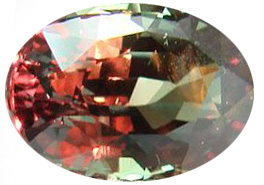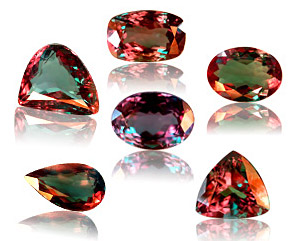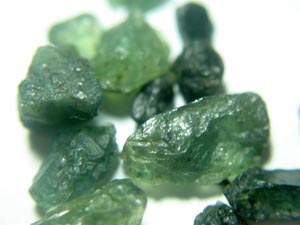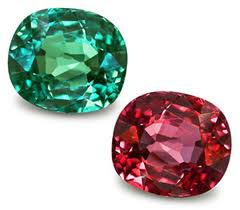|
||||
 Natural Alexandrite up to 5 carats and larger were traditionally thought to be found only in the Russian Ural Mountains. But since the 1980s when alexandrite was discovered in Brazil, the situation has changed. The Brazilian alexandrites have showed both a distinctive colour change and good clarity and colour. Though the colour is not as strong a green as the original one, the colour change is clearly visible. Nowadays alexandrites are also obtained from sources in India, Srilanka, Burma, Zimbabwe and some parts of Tanzania.
|
A Unique Stone For Gemstone Lovers
 A natural alexandrite is supposed to be a stone which brings good luck. With a hardness of 8.5, alexandrite is a great stone to wear. The more distinct the change of colour, the more valuable the stone. A fine alexandrite should show a vivid bluish-green in daylight and a purplish-red in artificial light, without any trace of undesirable brown or grey. If the origin of the stone is known beyond dispute to be Russia, we are talking about a real rarity of enormous value. Finely faceted alexandrites above one carat are thus among the most expensive gemstones in the world, rarer than fine ruby, sapphire or emerald. Some gemstones described as lab-grown (synthetic) alexandrite are actually corundum laced with trace elements or color-change spinel and are not actually chrysoberyl. As a result, they would be more accurately described as simulated alexandrite rather than synthetic but are often called Czochralski alexandrite after the process that grows the crystals. Alexandrite is a stone for gemstone lovers, experts and enthusiasts, a truly understanted gemstone. Its uniqueness and high value are not evident at first sight. The mysterious colour change will only occur on exposure to different light sources. But if you really get involved in alexandrite, you will be utterly fascinated and involved by this gem. Maybe you will also feel some of the magic and love associated to it. It is considered a good luck gemstone. It also has a reputation for assisting creativity and imagination.
|
Go to Ruby Gemstones Jewelry
Go to Crystal Jewellery Xy Page from Natural Alexandrite Page
Go to Peridot Gemstone Jewelry
Go to Agate Gemstone Jewelry
Go to Amber Gemstone Jewelry
Go to Aquamarine Gemstones Jewelry
Go to Emerald Gemstone Jewelry
Go to Sapphire Gemstone Jewelry
Go to Amethyst Crystal Jewelry
Go to Garnet Gemstones Jewelry
Check out your birthstone color .
Complete birthstone list
Complete list of gemstones
No reproduction permitted without permission





